Apr 10, 2012 | By Tim Stoddart
The Stages of Addiction
Addiction Resources
Addiction doesn’t strike out of nowhere. But how do we know when experimentation become a full disorder? There are stages of addiction that occur in a person’s life before they’re a full-blown addict. Most individuals start out with casual, recreational use, which develops to addiction after progressing through a number of stages. Understanding this progression can help us realize how we got to this point in our lives, and it can help us recognize potential addiction in others.
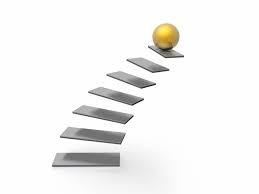 We wish to reiterate a point. Addiction is a cunning foe. This process doesn’t happen overnight. Addiction is the result of a pathological progression which includes damage to one’s health, financial ruin, destruction of relationships, overdose and ultimately, death. The path to addiction is very rarely the same in every person. Everyone has their own journey, and their own experiences. The good news is that substance use disorder can be treated at any stage in the process. Some people have had traumatic events in their lives, in which they found drug use or alcohol to cope. Some people try something once and don’t touch it for years, while other people may try it once and dive right into heavy use and addictive tendencies. There are lots of studies and research on the topic, but few things about addiction and human behavior are known as fact. The stages of addiction are no different, there can be slight variations from case to case.
We wish to reiterate a point. Addiction is a cunning foe. This process doesn’t happen overnight. Addiction is the result of a pathological progression which includes damage to one’s health, financial ruin, destruction of relationships, overdose and ultimately, death. The path to addiction is very rarely the same in every person. Everyone has their own journey, and their own experiences. The good news is that substance use disorder can be treated at any stage in the process. Some people have had traumatic events in their lives, in which they found drug use or alcohol to cope. Some people try something once and don’t touch it for years, while other people may try it once and dive right into heavy use and addictive tendencies. There are lots of studies and research on the topic, but few things about addiction and human behavior are known as fact. The stages of addiction are no different, there can be slight variations from case to case.
Stage One: Initiation
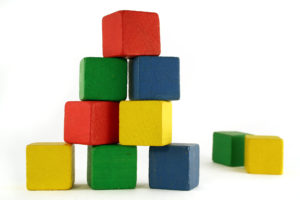
Most people try some form of alcohol and/or drugs before reaching adulthood. This is when someone is introduced to a substance for the first time. This stage generally happens during the teen years but is not the exception. You may be at a party when you’re offered cocaine for the first time, or on a date with a romantic partner when she suggests that you try acid. Regardless of your reasons for accepting the offer, you probably don’t have any plans to continue using drugs for months or years. Generally adolescents or young adults will try a substance for a number of different reasons:
- Out of curiosity
- Peer pressure or because their friends are doing it
- A lack of development in the pre-frontal cortex, which manages decision-making and controlling impulses.
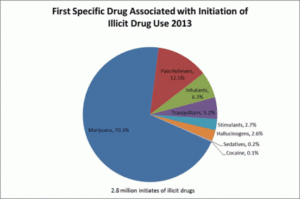
According to a survey by the Substance Abuse and Mental Health Services Administration (SAMHSA), about 2.8 million people ages 12 and above used an illegal drug or abused a legal drug for the first time in 2013. The same survey showed that 3.841 million people drank alcohol for the first time between the ages of 12 and 20. Additionally, More than half of new illicit drug users begin with marijuana. Next most common are prescription pain relievers, followed by inhalants (which is most common among younger teens).
Once someone has tried alcohol and/or drugs from the first time, they may decide to progress into the next stage of experimentation or may stop once their curiosity has been satisfied. This can depend on a number of factors including:
- Family environment
- Mental health issues such as Bipolar Disorder or ADHD
- Availability within the community
- Social environment – whether or not their friends are using
Stage Two: Experimentation
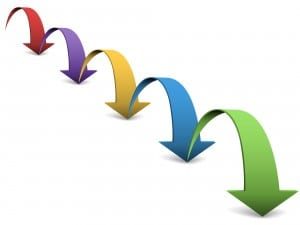 This stage is characterized by occasional use on a voluntary basis. In this stage individuals think they have control over their use and can often use in a singular time and go days or months without picking up again. However experimentation with a substance doesn’t always have to result in having “fun.” Some individuals may start smoking marijuana for chronic pain, or borrow a couple of pain-relievers from a friend to help ease the dissatisfaction of a migraine. Most addicts don’t set out to become physically and psychologically dependent on drugs. Whether the experimentation is out of a sense of adventure, peer pressure or a medical necessity, they learn how the substance makes them feel at this point.
This stage is characterized by occasional use on a voluntary basis. In this stage individuals think they have control over their use and can often use in a singular time and go days or months without picking up again. However experimentation with a substance doesn’t always have to result in having “fun.” Some individuals may start smoking marijuana for chronic pain, or borrow a couple of pain-relievers from a friend to help ease the dissatisfaction of a migraine. Most addicts don’t set out to become physically and psychologically dependent on drugs. Whether the experimentation is out of a sense of adventure, peer pressure or a medical necessity, they learn how the substance makes them feel at this point.
According to that National Institute on Drug Abuse, Most people use drugs for the first time when they are teenagers. There were just over 2.8 million new users of illicit drugs in 2013, or about 7,800 new users per day. Over half (54.1 percent) were under 18 years of age.
When prescribed by a doctor, drugs can be used as powerful tools for pain reduction and taken under proper medical supervision. However, when the user begins to take these drugs to self-medicate, they now become vulnerable to dependence and addiction. If experimental use continues or serves as a gateway to additional use (as it often does), patterns of alcohol/ drug abuse may develop.
In this stage a person may enjoy trying new drugs and experiencing them, however do not suffer any consequences from using. It can be hard at this point to determine if the experimental use will turn into something more serious. If a loved one is experimenting with drugs or alcohol, you may want to watch out for the reasons they are experimenting, how much they are experimenting with, and how often they experiment with new substances. If the user realizes how much they like the feelings that drugs give them, they may progress to stage three.
Stage Three: Regular Use
 Once this stage has been reached, substance use has become more frequent. The user will incorporate use into their regular routines. Regular use is the point with the stages of addiction that separates the addicts from non-addicts. Regular users will stay in this stage, but addicts will move on to the next stages of addiction. At this point, the individual is not yet reliant on the drug for physical or psychological function, but the brain is slowly becoming trained to respond to the rewards of using the drug.
Once this stage has been reached, substance use has become more frequent. The user will incorporate use into their regular routines. Regular use is the point with the stages of addiction that separates the addicts from non-addicts. Regular users will stay in this stage, but addicts will move on to the next stages of addiction. At this point, the individual is not yet reliant on the drug for physical or psychological function, but the brain is slowly becoming trained to respond to the rewards of using the drug.
The user may continue regular use for a number of reasons, including:
- Euphoric effects
- Pain relief
- Weight loss
- Stress reduction
- Proper sleep
This stage can happen regularly in social situations, or alone. Those with strong tendencies to isolate themselves may progress through the stages faster. A regular use of drugs may lead to lots of risky behavior, such as binge using, driving under the influence, unexplained violence, and symptoms of depression and anxiety. and becoming preoccupied with drugs. However, the problem with regular use is that the risk for substance abuse greatly increases during this stage.
Additionally, in this stage, a person may notice that they are not bouncing back as quickly after getting “high.” This is a result of the brain taking longer to chemically repair itself and return to normal balance. As the user crosses the bridge from regular use to abuse, there may be worries about losing the drug source since substance use has become tied to the idea of escaping negative emotions or situations.
Stage Four: Risky Use/Abuse
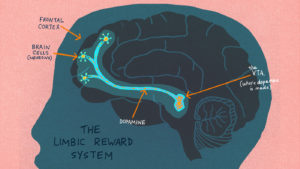
When people begin abusing drugs, they begin causing damage to the relationships and responsibilities in their lives. Their jobs may become jeopardized and relationships may start to falter. At this stage, the non-problematic drug use develops into a problem. Despite the negative consequences, they don’t stop frequently using drugs. The line between regular use and risky use and abuse is a very thin one, but is usually defined as continued use of substances in spite of severe social and legal consequences.
At this point, a loved one might notice significant changes in a users behavior that will likely alarm them. If this is the case, the loved one should work towards trying to discover ways to help them get treatment for their risky use before it escalates.
What might have begun as a temporary form of escape can quickly lead to more serious problems. This is the stage where the warning signs of addiction will begin to appear such as:
- Craving
- Preoccupation with the drug
- Symptoms of depression and anxiety
- Irritablity
- Fatigue if the drug is not used
Once a user is in this stage, quitting becomes increasingly difficult. Someone may try to quit a substance but the psychological cravings are too much. It’s hard to imagine living without the drug, even though the drug use is making life feel more and more unmanageable.
Call Us
Stage Five: Dependence
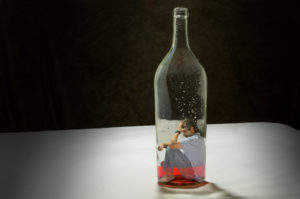 Dependence occurs when the brain becomes so accustomed to the sensations generated by methamphetamine, cocaine, alcohol, marijuana or opioid drugs that the user needs to take a substance to function.
Dependence occurs when the brain becomes so accustomed to the sensations generated by methamphetamine, cocaine, alcohol, marijuana or opioid drugs that the user needs to take a substance to function.
Part of the dependence stage is when the user develops a tolerance. Tolerance means the brain and body have adjusted to the drug and it now takes a greater amount to feel the effects of it. A person that’s developed a tolerance to a prescription painkiller their doctor prescribed may notice that the same dosage no longer gets rid of the pain. In short, the individual needs higher doses to experience any noticeable effects.
Additionally in this stage the user has reached a physical dependence. This happens when a user experiences a physical response from not taking any sort of substance. They may become physically ill without the drug causing withdrawal symptoms that may appear flu-like with opiates or sweats and shakiness with alcohol. Chemically, the brain has become accustomed to the substance and doesn’t function well without it. These symptoms often disappear when they’re able to get a drink or a fix of their drug.
The user may also develop a psychological dependence. This means that on the user’s will rely on a drug to reach a level of functioning or feeling of well-being.
During this stage, a loved one’s use will result in serious behavioral changes that are obvious and dangerous – however, they will keep on using the substance. At this time, it is best if you help your loved one by providing them substance abuse treatment options that can help end their dependency. With dependence to drugs or alcohol, individuals don’t feel “normal” if they’re not using. This stage is a sign that they have crossed the threshold from dependence to addiction.
Once the dependent stage has been reached, quitting on your own isn’t an option.
Stage 6: Substance Use Disorder
 When a person has advanced through the stages of addiction, they become an addict and have developed a “substance use disorder.”They are entirely dependent on drugs and experience uncontrollable cravings, as well as withdrawal symptoms when they aren’t using. Additionally, the user will need the drug to function in their day to day life and will do just about anything to get it, often times resulting in risky-behavior. When the individual is unable to obtain the drug, their whole life begins to feel out of control. At this point, the drug begins the control the user. In this stage, the addict will require professional treatment.
When a person has advanced through the stages of addiction, they become an addict and have developed a “substance use disorder.”They are entirely dependent on drugs and experience uncontrollable cravings, as well as withdrawal symptoms when they aren’t using. Additionally, the user will need the drug to function in their day to day life and will do just about anything to get it, often times resulting in risky-behavior. When the individual is unable to obtain the drug, their whole life begins to feel out of control. At this point, the drug begins the control the user. In this stage, the addict will require professional treatment.
The effects of a substance use disorder (SUD) may include:
- Denial
- Emotionally unavailable
- Obsession with obtaining the drug
- Chronic relapses
- Legal and financial trouble
- Loss or harm of personal relationships
- Disease such as HIV/AIDS, etc.
- Death
The American Society of Addiction Medicine defines addiction as a chronic disease involving brain circuitry, rewards, motivation and memory. Addiction is a chronic disease, meaning that it is slow to develop and of a long duration.
When a user is in the midst of a substance use disorder, chronic use floods the brain with the neurotransmitter, dopamine. This teaches the user to use more of the substance that produced such a pleasurable effect. It also keeps your brain from producing enough dopamine on it’s own, changing the chemicals and altering the brain.
Stage 7: Treatment
 Once an addict or alcoholic is in full blown addiction, usually professional help is needed if there is any hope for long term sobriety. Recovery can be a very hard and sometimes a very painful process, but it is always necessary if the afflicted addict hopes to have a chance at a better life. Many times, we only need to look at our own experience of the experience of others to see that this progression follows a generally standard course.
Once an addict or alcoholic is in full blown addiction, usually professional help is needed if there is any hope for long term sobriety. Recovery can be a very hard and sometimes a very painful process, but it is always necessary if the afflicted addict hopes to have a chance at a better life. Many times, we only need to look at our own experience of the experience of others to see that this progression follows a generally standard course.
If the user is lucky, they will find themselves in a treatment or rehabilitation center. Usually a detoxification period with a fully staffed medical team is required to kick-start this process. The purpose of this is to rid the body of the toxic substances that were being used, accompanied by fully-staffed medical personnel to help manage severe or dangerous withdrawal symptoms.
Following the detox process, behavioral therapy to help the addict understand the root of the problem is suggested. Medication management such as the use of anti-depressants or supplements may be utilized while accompanying the therapy modalities.
Chronic relapse may occur, but is not the rule. The longer an individual remains in treatment, the more likely they are to achieve long-term sobriety.
Additionally, family and friends may want to take part in the therapy process. There is a recovery community and world of support groups to help guide you and integrate you back to society without harmful substances. 12-step meetings may be suggested such as AA, NA, CA, or Al-Anon for families. This usually helps and may be wise to seek out.
These Stages Are A Guide
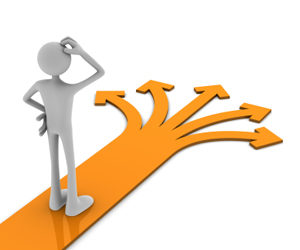 Of course, these stages can be different for everyone and during the early stages, a user may fluctuate between two. The time spent in each stage will be different for everyone. It may take a few months or many years for an addict to arrive at stage six. There is no absolute, universal way to define the stages of addiction; they are merely meant to be a guide to understanding the progression of drug use and the manifestation of the disease of addiction.
Of course, these stages can be different for everyone and during the early stages, a user may fluctuate between two. The time spent in each stage will be different for everyone. It may take a few months or many years for an addict to arrive at stage six. There is no absolute, universal way to define the stages of addiction; they are merely meant to be a guide to understanding the progression of drug use and the manifestation of the disease of addiction.
Additionally, researchers have studied and found that segments of the population are genetically predisposed to addiction, however it is not a guarantee that the individual will become an addict. Someone with no predisposition can just as easily develop an addiction under the correct circumstances.
Fortunately, you do not have to wait to become addicted to seek out help. Addiction experts are available to help you in any of these phases, from providing education and counseling in the experimental stage to helping you break your physical and psychological bond with drugs in the addiction stage. Knowing the five stages of addiction as a guide, if we’re being honest with ourselves, can save us from getting lost or lend someone else some well thought out directions.
Receiving Treatment
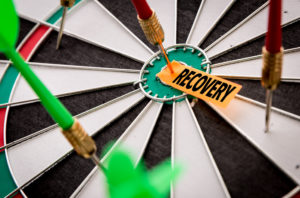
Addiction is a progressive disease, and if not treated can be fatal. There are many other’s who have achieved long term sobriety. In order to fully recover from its devastating effects you need to understand all the effects as well as all of your available options. As the leading provider of information regarding addiction and treatment on the internet, the experienced staff at Sober Nation are able to provide you with the information and support you need to break the cycle of addiction and guide you with the help you need while treating you or your loved one with the respect they deserve. Regardless of where you live, how much money you have, or how severe your addiction is, there is a treatment center that can help you recover. Don’t wait another day.
Turn your goal of recovery into a reality and contact SoberNation today.
For treatment options contact our 24 hour helpline at: 866-317-7050
Kelly
11 years ago
I’m so proud of you Seth for being honest and vulenrable in front of everyone, bro. Your testimony was articulate, real, and inspiring. May God continue to use the broken places for His Glory.
Allan
11 years ago
I noticed the stages run linear, as if someone can’t move back and forth.
Mike K
11 years ago
I would agree this is a path for many people. I believe for me it was somewhat like this as I progressed from innocent use to where it was a intimate partner in dealinf with severe childhood trauma.
Recent Articles
Warning Signs of a Drug Relapse: Spot Them Early
How to Quit Cocaine: Overcoming Addiction & Withdrawal Symptoms
Non 12 Step Fellowships for Flexible Recovery
What are 12-Step Programs? Explore Their Principles and Impact?
What is Relapse? Understanding Recovery’s Twists and Turns?
Question About Treatment
Get Confidential help 24/7
(866) 207-7436Who Answers
Contact Sober Nation's Sponsored Hotline
If you are seeking drug and alcohol related addiction rehab for yourself or a loved one, the SoberNation.com hotline is a confidential and convenient solution.
Calls to any general hotline (non-facility) will be answered by Treatment Addiction Solutions
Alternatives to finding addiction treatment or learning about substance:
If you wish to contact a specific rehab facility then find a specific rehab facility using our treatment locator page or visit SAMHSA.gov.
To learn more about how Sober Nation operates, please contact us